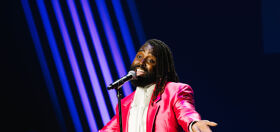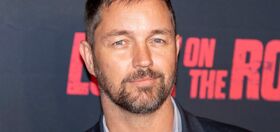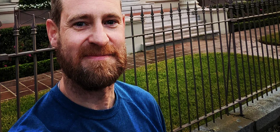
It’s been 29 years since we lost Pedro Zamora, the handsome, charismatic, out and proud Cuban-American who brought national attention to HIV/AIDS as a cast member on MTV’s The Real World: San Francisco.
Zamora, who exchanged vows with his partner Sean Sasser in a landmark commitment ceremony on the reality series, passed away from AIDS-related complications at 22 years old on November 11,1994, one day after The Real World: San Francisco finale aired.
In an era when HIV infection was the leading cause of death for men between the ages of 25 and 44, Zamora helped humanize the disease in the eyes of Americans –– and for the government.
President Clinton called his passing a reminder to “intensify our efforts to reduce the rate of HIV infection, provide treatment … and ultimately find a cure for AIDS,” in a statement after his death.
This year, National Latino AIDS Awareness Day (which took place earlier this week on October 15) served as a reminder that his impact is still felt and appreciated throughout the LGBTQ+ community.
Danny Roberts, who appeared on The Real World: New Orleans in 2000, told Yahoo! Entertainment, “[Zamora] wasn’t an activist in the way we think of activists today. He was, simply, a human with a giant heart who was open and sharing.”
Roberts, who learned he was HIV positive in 2011, shared his diagnosis with the world in 2018 as a means of facing his “own misconceptions and bigotry.” He is now undetectable.
“[Pedro] was allowing people to come into his world as an observer, and you couldn’t help but feel anything but empathy,” Roberts explained.
That empathy certainly extends to LGBTQ+ people in Latin communities, like Erick A. Velasco, who co-hosts The Homo Homie Podcast. On the show, he discusses stigmas facing queer Latine people and how language, religion, and family often intersect.
Velasco called Pedro “a reference now to look back upon [who] truly helped the way I do things with my life today.”
“I relate with Pedro’s story: family struggles, poverty, dealing with sick parents, being gay, and navigating the way we live with HIV,” he told Yahoo! Entertainment. “It’s a way for me to know that, like him, I’m doing the right things too.”
Moreover, Zamora’s approach and advocacy in the ’90s seemed to understand HIV education would not work with a “one-size-fits-all” approach across different communities.
According to the CDC, Black/African American people made up 40% of new HIV diagnoses in 2021, and Hispanic/Latino people accounted for 29%.
“Raising visibility and acceptance of these communities is part of the solution, as is taking action against ongoing threats to everyone’s health, safety, and freedoms,” GLAAD communications director Tony Morrison told Yahoo! Entertainment.
Related:
Good news for people living with HIV & their sexual partners
The effectiveness of antiretroviral therapy (ART) has been proven once again.
Thanks to advances in medicine and necessary intervention from the government, many diagnosed with HIV can now expect to experience full and healthy lives. That’s why Charles Sanchez, a Mexican-American actor who’s HIV positive, told Yahoo! Entertainment that he finds Zamora “more inspiring now.”
“For people living with HIV, he said, ‘Hey, you can live. You can have a wonderful life as long as you can,'” Sanchez explained. “That was important.”
You can learn more about National Latinx AIDS Awareness Day, as well as resources for people living with HIV in these communities here.
Related:
Drug shows promise in eliminating HIV from the body & could bring us one step closer to a potential cure
One of the difficulties in finding a cure for HIV is the virus can lay dormant in hard-to-reach parts of the body. But that might be changing.





















Kangol2
Pedro Zamora was an iconic and invaluable figure in showing how to live with AIDS, how to educate oneself about HIV and AIDS, and how to have a relationsihp as a PWA during that era. He was so young and such a visionary. He and Sean Sasser were also pioneers in being out gay men of color, in a loving relationship, on national TV. RIP.
The Real World also deserves praise for casting him and MTV deserves praise for allowing his casting and championing him while and after he was on the show.
A shout out to Sean Sasser, who continued his HIV/AIDS activism right up to the time he passed away in 2013.
Troyfight
Pedro was a huge inspiration. Nice article.